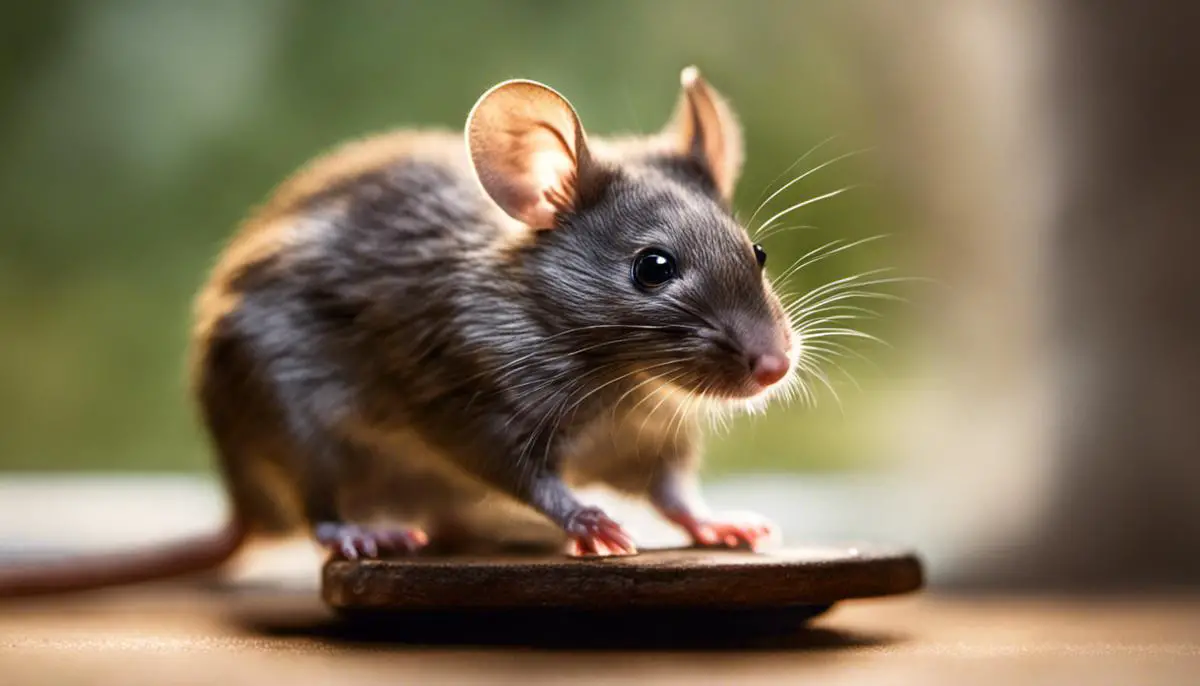Discovering a mouse in your home can be an unsettling experience, as the presence of these small invaders often signals the likelihood of more hiding in the shadows. Finding, repelling, and humanely dealing with these creatures can range from a manageable task to a daunting challenge, depending largely on your knowledge of their habits and the tools at your disposal. Our detailed exploration into the life, habits, and environmental preferences of mice provides a comprehensive understanding of these furry foes. Along with this, we delve into an extensive list of natural deterrents, which can be used to create a secure, mouse-free space in your home. Plus, learn how to make your abode less appealing to mice, preventing any potential invasions before they happen. Lastly, for those looking for a direct approach, we cover a range of DIY mouse traps that are effective, humane, and easy to implement.
Understand Your Furry Foes
Unraveling the Mysteries of Mice: Behavioral Insights for Effective Home Control
In a world as fascinating as it is complex, an unlikely interest point emerges for hobbyists – understanding the little, unwelcome houseguests also known as mice. In spite of their benign appearance, they’re often notorious for invading homes, causing a mix of consternation and intrigue. Let’s dive into the world of mice, and explore what drives them indoors, and how engraining ourselves in their tiny lives can provide effective control strategies.
When examining the drive behind mice moving into human homes, the answer may be startlingly human-like. Comfort, food, and refuge define the ‘tri-factor’ that draws these tiny creatures into our domestic spaces. As fall giving way to winter, mice seek out warm, dry places to evade the harsh outdoors, tragically often waltzing straight into your pantry.
Food availability plays a mammoth role in these invasions. With their omnivorous dietary habits, our homes provide a veritable buffet for mice. They’ll happily gnaw their way through anything from cereal and bread, to fruits, seeds, and even your beloved houseplants. Not to mention, our cluttered cabinets and hidden corners provide the perfect terrain for them to nest, breed, and thrive.
By understanding their motivations, hobbyists can formulate an effective plan to control mouse populations within homes. So let’s decode their behavior to unlock the secrets of mouse-control.
Let’s start with their quest for shelter. Seal potential entrances that these tiny creatures could use. Using materials like steel wool or hardware cloth helps as they deter mice with their sharp, unchewable surfaces. Pro-Tip: Remember, a mouse can squeeze through a hole as small as a dime!
In regards to their food-seeking behavior, it is crucial to keep food stored securely. Utilize airtight containers, clean up any food spills immediately, and remember to store pet food in pest-proof containers. The less enticing the food source, the less appealing your home becomes to mice.
Now for their nesting habits. Mice are fond of cluttered, undisturbed areas. Maintaining clean, organized spaces, particularly dark, secluded areas like basements or garages, can restrict their nesting options. It’s also worth noting that mice are primarily nocturnal, so noise and light during the night can be effective deterrents.
Combining these strategies based on their behavioral traits creates an integrated approach to mouse control. It’s engaging, methodical, and while it requires some patience, it’s incredibly rewarding when those unintended house guests start shopping for a new abode.
Knowledge of mice behavior feeds into our own human drive – the thirst for understanding nature, finding solutions, and creating harmony in our homes. Because after all, the hobbyist’s pursuit is to dig deeper into the everyday mysteries around us, even if it’s as unassuming as figuring out what drives the humble mouse into our kitchens. Happy mouse hunting!
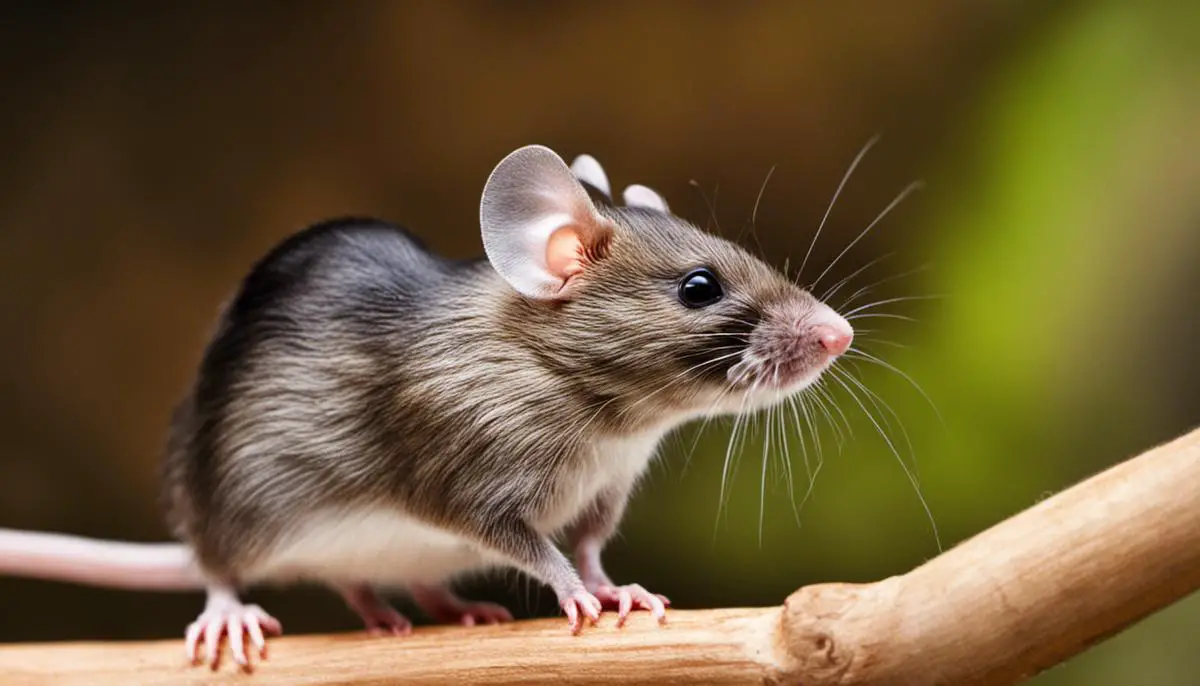
An Array of Natural Deterrents
Now that we have an understanding of why mice are drawn to our homes and how to better control their populations through proactive measures, let’s dive deep into the world of all-natural deterrents that can make mice think twice about stepping foot in your sanctuary. This article seeks to empower you with the knowledge on how to create an environment that is inherently uninviting to mice, using resources offered by Mother Nature herself.
In par with our integrated approach to mouse control, the use of natural deterrents plays a pivotal role in bringing about sustainable results. These deterrents operate subtly but effectively, triggering the innate fear and aversion mice associate with certain smells, tastes, and materials.
First, consider peppermint oil. This essential oil intoxicates our senses with its refreshing and invigorating fragrance, but mice dread this scent. Soak cotton balls in peppermint oil and strategically place them around your dwelling. Pay particular attention to the areas you suspect mice frequent – such as food storage areas, basements, and attics.
Another powerful natural deterrent is the use of mothballs. The odor emitted by naphthalene, the active ingredient in mothballs, is noxious to these sensitive creatures. That being said, please remember that mothballs need to be used with care as they can be hazardous to humans and pets if improperly handled.
The diverse range of predator urine available in the market serves as an excellent biological deterrent. Mice, being low on the food chain, are instinctively programmed to avoid territories marked by predators. Sprinkle this around your property line and mice will recoil and rethink their home invasion plans.
Crushed, dried snake poop is another fantastic, albeit unusual, remedy. Available at pet shops, it blends into your garden naturally. The scent of a snake, a mortal enemy, sends fear signals to mice, putting your garden off their potential destination list.
Cayenne pepper, one of nature’s fieriest treats, inflicts a burning sensation on the tongue and nose of mice, dissuading them from snacking in your home. Sprinkle this on food likely to attract mice – it is excellent for your bird-feeder as birds are not sensitive to capsaicin, the ‘hot’ component in chilies.
Strategically positioned ultrasonic devices produce noise at frequencies we humans cannot hear, but which annoy and disorient mice. These devices are harmless, non-toxic, and can be moved around the house to achieve your desired results.
Finally, household pets like cats and dogs, in addition to being our beloved companions, act as natural deterrents. The scent or mere presence of these larger animals can often be enough to keep mice at bay.
All-natural deterrents contribute significantly towards one’s mouse control strategy. Coupled with closing entry points, secure food storage, and maintaining clean spaces, these deterrents create a hostile environment for mice, making your home a no-go zone for these pesky invaders. Armed with this knowledge, continue your journey in harmonious cohabitation with nature, while preserving the sanctity, and safety, of your homes. Now go forth, and deter those mice – naturally!
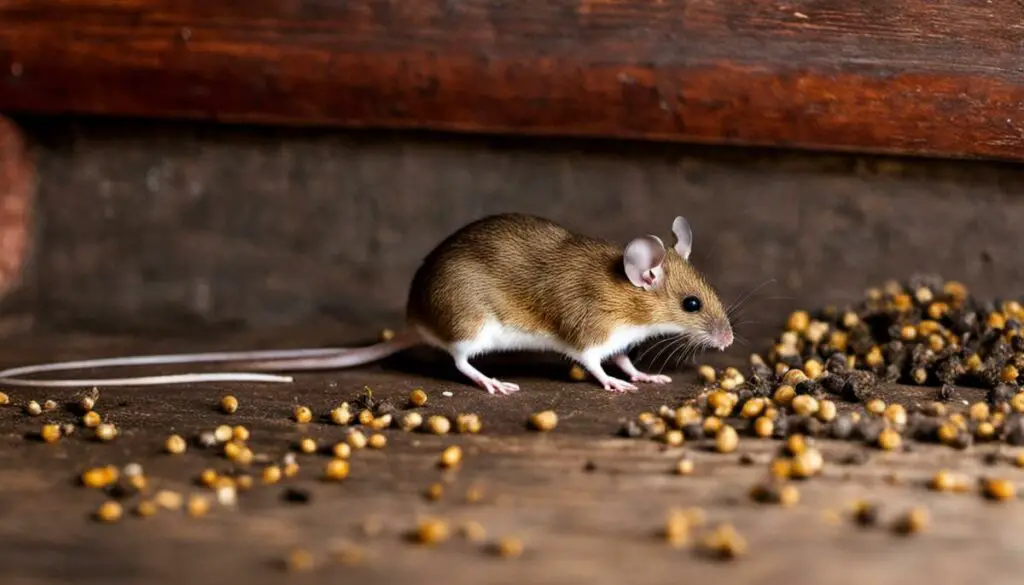
Making Your Home Less Attractive to Mice
While ensuring that your home is less appealing to our small, whiskered intruders is definitely a significant portion of the battle, there are still many more tricks in the arsenal to ensure a mouse-free home. From an enthusiastic hobbyist perspective, the war against mice is never-ending but victory is always sweet and possible. Unexplored in the first part, let’s delve into the world of landscaping tips and exterior house modifications that can considerably discourage mice from choosing your home as their next housing opportunity.
First up, landscaping and yard management takes center stage. Mice, like many creatures, look for comfortable, undisturbed areas to nest. Dense foliage, unkempt grass, and piles of leaves or other yard debris can serve as prime real estate for mice. Maintaining a well-groomed yard by frequently mowing the lawn, trimming overgrown bushes, and clearing out yard debris can go a long way in making your property feel less like a vacation resort for mice.
Another landscaping tip to consider is to keep firewood piles at least 20 feet from the house and elevated off the ground. Firewood piles are often a mice’s paradise, so it’s crucial to make that paradise a little harder to access.
Moving onto exterior house modifications, something as simple as a door sweep could seal the deal (pun intended!). Door sweeps or draft stoppers placed along the bottom of doors can protect your home from tiny intruders. For any houses with basements or crawl spaces, ventilation covers are worth considering. Covered vents still allow the necessary air flow, but restrict access to unwelcome guests, specifically mice.
Bird feeders, often overlooked, can be a buffet for a mouse. Think about this: the bird feeder, supposed to attract birds, unintentionally attracts mice due to the fallen seeds and grains. By moving feeders far away from the house and regularly cleaning the spilled feed, you can minimize the mouse attractions.
Last but not least, just as some people utilize special sensor lights to deter potential burglars, it’s plausible to use similar techniques against mice. Installing sensor lighting around the exterior foundation of your house can be a fairly solid investment in abating a night-time mouse trespass.
Armed with these effective tips and strategies, you’re now better equipped to keep mice at bay. As you address these areas in your home and yard, you’re taking proactive steps, building a fortress against these pesky invaders. Your home’s now not just an ordinary abode but an imposing fortress for any mouse daredevils. Be relentless, be persistent, and you’d soon see the fruits of your labor – a mouse-free home.
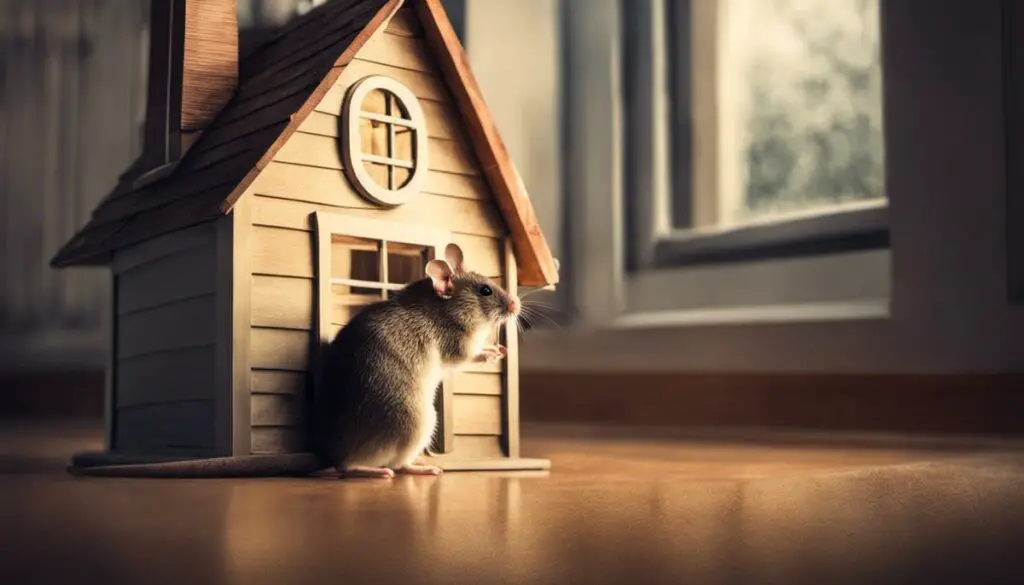
Creating Your Own Mouse Traps
Actively engaging in a passion for humane mouse control, it’s now time to delve into the art of Do-It-Yourself (DIY) humane mouse traps and their effectiveness.
Compassionate homeowners who wish to live in harmony with nature, while still protecting their homes, will appreciate and enjoy these humane methods.
There’s something beautifully fascinating about harnessing simple, yet inventive techniques to make DIY humane mouse traps. It’s all about understanding the dynamic ecosystem in and around the house and finding a balance that benefits both you and the small creatures we share our spaces with.
Diving right into it, one of the most common DIY humane mouse traps involves an easy-to-craft bucket trap. This trap utilizes a narrow plank as a ramp, leading to a revolving cylinder placed over a bucket. With the irresistible allure of peanut butter placed on the cylinder, mice clamber up the ramp and onto the cylinder, only for it to flip them harmlessly into the empty bucket. Once captured, they can be safely relocated to a suitable outdoor environment far from the house.
Another helpful intervention is the use of “tin cat” traps. These metal boxes lured with peanut butter or other enticing foods allow multiple mice to enter without providing an exit, trapping them unharmed for relocation.
While it’s a joy to use creativity to build DIY humane mouse traps, it becomes equally as essential to monitor their performance closely. Discerning homeowners will want to check the traps daily to ensure any captured mice can be relocated swiftly. Extended confinement could lead to unnecessary stress for the mouse and potentially damage the trap’s effectiveness.
For many, there’s something truly satisfying about creating a DIY solution that not only addresses the issue but does so in a way that respects all forms of life. Crafting humane traps and actively learning about the habits of these small creatures can enhance the understanding and appreciation of the intricate ecosystem that exists right at home.
While exploring all these DIY options to manage a mouse population, it’s crucial to remember that each house, every mouse, and all experiences are unique. There might be a bit of trial and error in the journey, but the pay-off of finding a balanced, harmonious solution, is well worth it.
Wrap up that enthusiasm, pepper it with a dash of empathy, mix in a good portion of curiosity, and paint it in shades of creativity. That’s the true spirit of a homeowner using DIY humane mouse traps to control a mouse population at home. The feeling of living in harmony with the world around you, while protecting your home, is a reminder of humanity’s role as an ally and steward of the natural world. Allow the journey to inspire you to explore more, learn more, and create more. There’s no end to the marvels you’ll discover. The world of DIY humane mouse control is a journey, not a destination. Keep going, keep growing, and keep glowing!
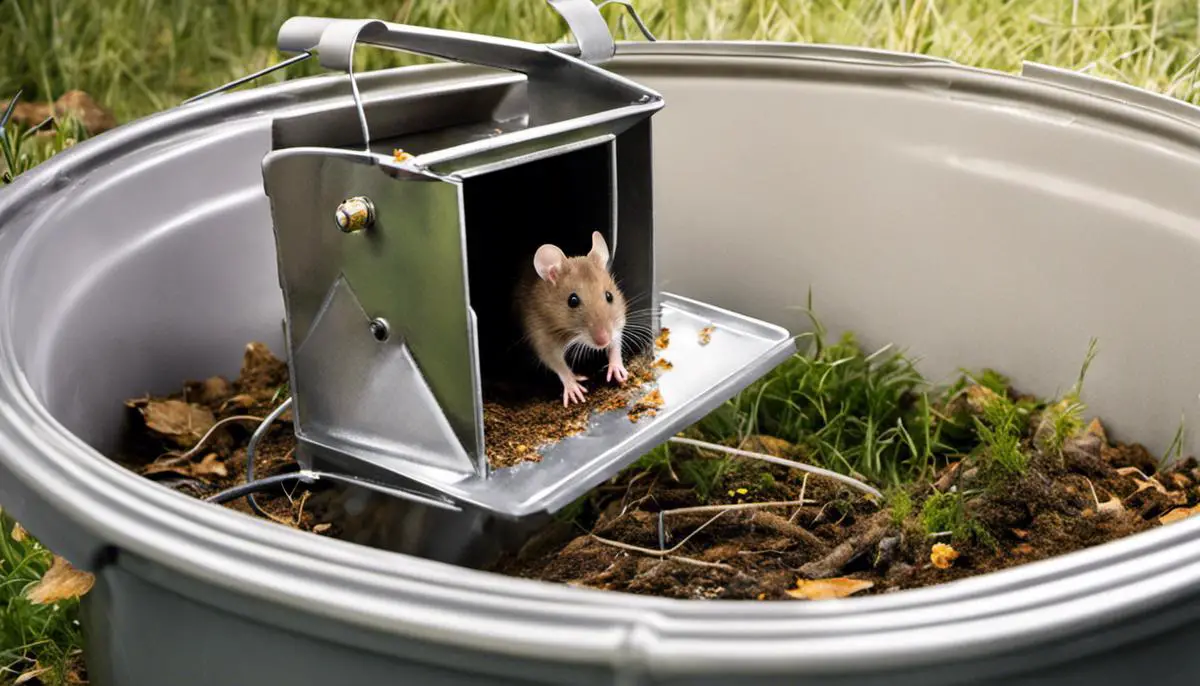
There is much to learn about our quiet, furry house invaders, and a wealth of natural and safe methods to deter, trap, and remove them from our homes. Understanding mice better equips us to anticipate their actions and preferences, thereby helping us create an environment less attractive to them. The natural deterrents discussed offer practical, cost-effective, and non-toxic solutions – serving as a great alternative to chemical-infused repellents. And of course, the DIY traps present a humane way of catching and releasing these animals into the wild, providing a balance between maintaining our comfortable, mouse-free homes and respecting all forms of life. By incorporating these methods and tips, you’re already on your way to establishing an informed, natural, and compassionate approach towards mouse control.

